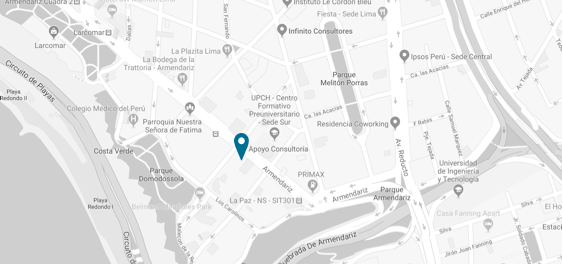In 2026, the Peruvian economy will grow by 3.2%, a pace similar to that of 2025, despite electoral risks
In the third quarter of 2025, the economy grew by 2.5%, a slower pace than that observed in the first months of the year.
This month, the political outlook remained relatively stable despite a decrease in President Boluarte’s approval rating. Inspite of her low popularity, the appointment of persons with technical profiles in some ministries, fatigue after almost three months of protests, and closer ties to the center-right in Congress have allowed the President to remain in office.
The strengthening of the Executive-Legislative relationship has favored the government, enabling a relevant bloc of support. This new context is explained by the objective of the Executive and the Legislature’s objective to remain in office until 2026, as well as the lower conflict which mitigates the feeling of crisis, and the favorable context for negotiation spaces with Congress (e.g. heavy rains).
The calmer conditions will allow the government to have a more proactive agenda, in a context of consensus; however, for the moment, the Executive’s measures have been limited to mitigating the effects of natural disasters. Despite a calm conjuncture, there are still other latent risks such as the presentation of populist initiatives by Congress.
In April, the political outlook remained relatively stable in Peru, despite the new decrease in approval ratings for President Dina Boluarte, who has suffered a six-point drop since the beginning of her term (see graph below). In spite of her low popularity, limited political experience, and initial liability of deaths in protests, the President has managed to stay in office, though with fragility and precariousness. To date, some factors that have played in her favor include technical improvements in some ministries, exhaustion after nearly three months of protests, and approaching the center-right majority in Congress.
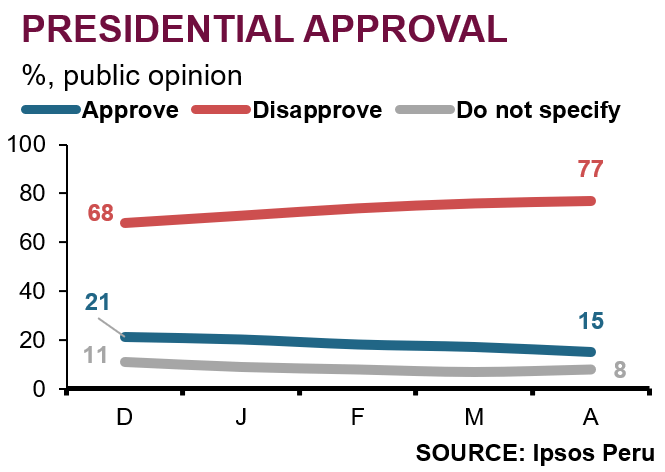
The President has not been able to capitalize on rainfall events, so there was no improvement in her approval. Only 13% considered Boluarte to be leading efforts against natural disasters (Datum, April 2023). In contrast, during the administration of Pedro P. Kuczynski, who also faced the El Niño phenomenon, there was a 10% increase in approval in April and 51% indicated that he was adequately addressing the disasters (Datum, April 2017). The difference would be explained because the President began her administration with very low legitimacy that is difficult to overcome. Although the government has introduced aid measures for those affected and has promoted efforts for economic recovery, the effects will probably be more evident in the second semester.
This month was marked by the Cabinet reshuffle, which did not imply a shift in government policy, but rather aimed to replace ministers who were being questioned. The most relevant appointment is that of Antonio Valera as Minister of Labor. The management of the former head of the sector, Luis Adrianzen, was criticized for not showing intentions to reverse certain labor regulations instituted during the government of Pedro Castillo, such as limitations on labor outsourcing. In contrast, Valera has shown opposition to this measure. On the other hand, the appointment of Magnet Márquez in Education was objected by a sector of the center-right, as it would imply a disagreement with the statements of her predecessor against the IACHR. Despite this, the minister would maintain a similar position, as she held the position of deputy minister during the outgoing minister’s term. It is not expected that the alliance between the government and the Congress will be affected by these new appointments.
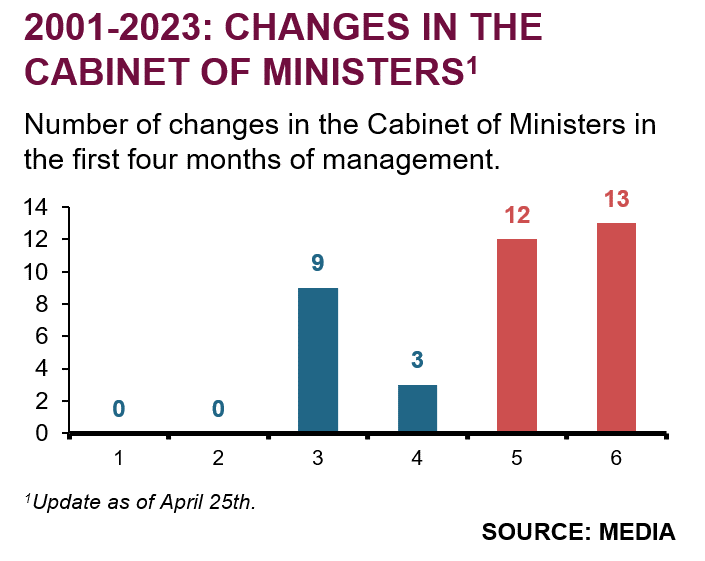
Given this situation, the relationship between the Executive and Legislative branches has strengthened, and despite not having a parliamentary bench, the Government would maintain a relevant block of support. Proof of this was the favorable result for President Boluarte in the vote to admit the motion of impeachment against her, which was rejected with 64 votes and 10 abstentions. In recent months, this implicit alliance has been strengthened, and this can be explained by four factors: (i) the Executive and the Congress agree on the goal of remaining in office until 2026, (ii) the weakening of the left-wing alliance in Congress, (iii) less conflict mitigates the sense of crisis, and (iv) the current situation favors space for negotiation with Congress (e.g. strong rains).
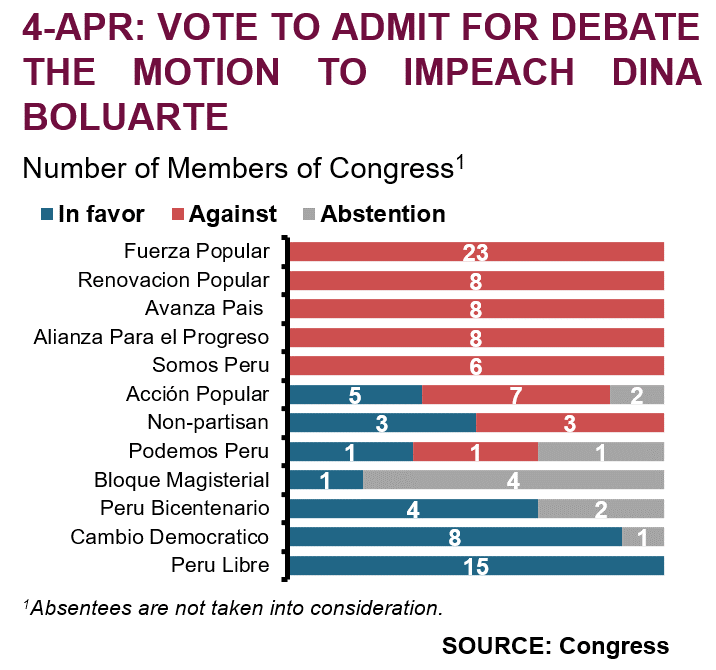
The calmer political environment offers a space for a more proactive economic agenda by the government.In view of this, the Executive has presented some proposals, such as the recently approved supplementary credit and the creation of a National Infrastructure Authority; the government will have to negotiate with Congress the support for the latter measure. Until now, the government’s proposals have been reactive to current problems, such as in the case of natural disasters. However, it is expected that the government will be obliged to take a position on the pension reform in the coming weeks, as stated by the Minister of Economy.
Despite the improved relationship between the branches of government, which could bring some calm, as well as an improvement in the recruitment of technical profiles in the executive, other risks remain. In the last month, there has been an increase in the presentation of regulatory bills. This can be partly explained by measures that sought to respond to weather conditions, as well as the regulation of other sectors of interest to the Legislature, such as labor relations and banking. Although the initiatives for the aforementioned sectors could have a high impact, a low approval rate has been recorded for them. In fact, while in the previous term the approval rate was 30%, it is currently 17%. However, some issues have proved popular with legislators, such as pensions. In this regard, a further withdrawal or even a reform of the sector could be discussed in the coming weeks.
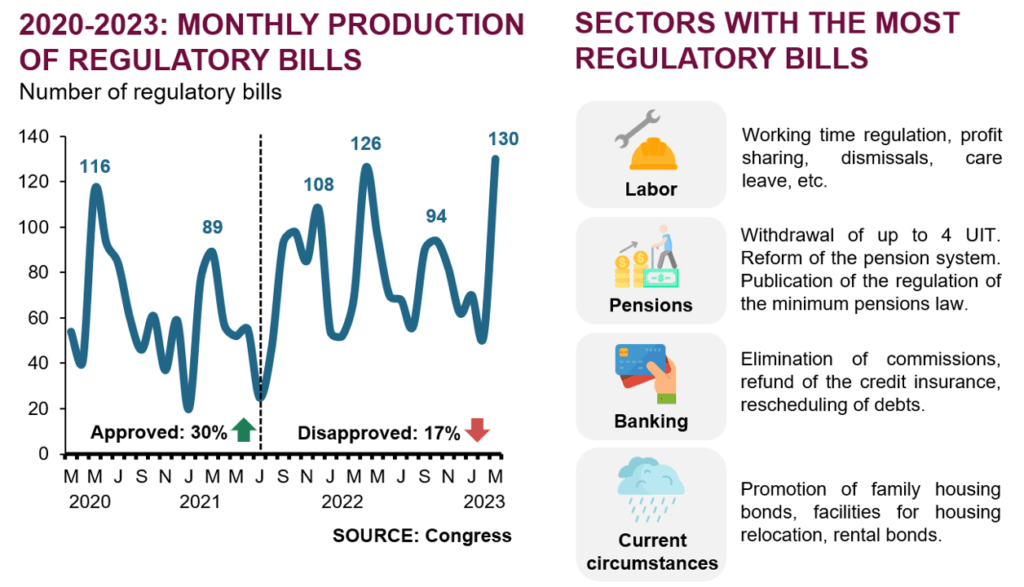
To access the complete report contact us at: contactaSAE@apoyoconsultoria.com

Senior analyst
In the third quarter of 2025, the economy grew by 2.5%, a slower pace than that observed in the first months of the year.
This month, President Dina Boluarte’s cabinet demonstrated resilience in the face of criticism over leaked audio recordings implicating Ministers Eduardo Arana (PCM) and Juan José Santiváñez (Interior).
The Government’s main allies, Fuerza Popular and APP, leveraged the crisis triggered by the murder of 13 mine workers in Pataz to strengthen their influence over ministerial appointments.
